Cauldrons for induction cookers: description, types, selection and operation
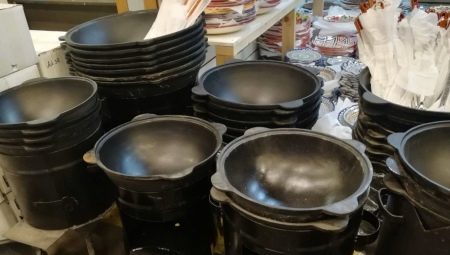
An induction hob has many advantages, but one drawback is that it requires certain cookware. The principle of operation of induction is to heat not the stove itself, but the dishes: the burner contacts the bottom of the dishes and it heats up. That's why for induction, only those dishes are suitable that have a certain mark - a spiral or a zigzag with the inscription "induction"... The induction cauldron can be traditional cast iron or steel. These materials have the required high resistivity and magnetic permeability.
The taste of a dish cooked on such a stove is no different from food that has been cooked over a fire. In addition, induction allows you to save time during cooking and set the timer.
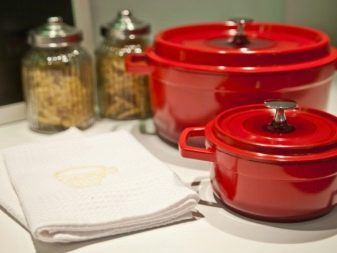
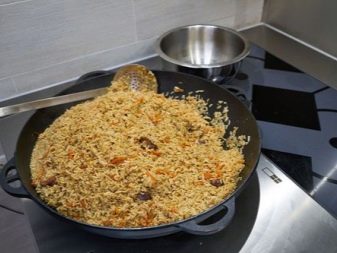
Peculiarities
For the cookware to fit perfectly to the induction hob, it must have a completely flat bottom. Otherwise, the stove will not work, as contact will not be established. Therefore, when choosing a cauldron for induction, pay attention to both the material and the bottom of the cookware. Unfortunately, traditional cauldrons with a convex bottom will not work. In such utensils, you can cook over an open fire or in the oven.
Now let's move on to the features of the materials themselves.
- Cast iron should be calcined in advance with a small amount of ordinary vegetable oil when used for the first time. It will create a protective film on the inner surface of the cauldron, which will prevent food from burning.
- After washing, the cast iron should be wiped dry, as water droplets can cause rust to appear on the dishes, and it will be damaged.
- "Utyatnitsa" can be made entirely of cast iron or have an enamel finish on the outside.
- Steel options are also suitable for induction, but may burn.To prevent this from happening, you should regulate the degree of heating of the stove and constantly stir the food during cooking.
- When choosing cookware made of steel or aluminum, pay attention to the thickness of the bottom and walls - it should be at least 1 cm.
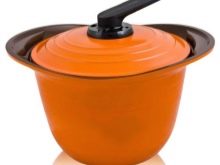
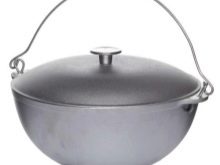
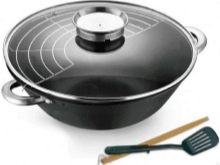
Varieties
It's no secret that a real tasty pilaf is cooked only in a certain dish - a good cauldron. Its shape is usually round or oval, slightly widening towards the top. The cauldron should have a thick bottom and walls, and the lid may be lightweight.
For home use, the flat bottom option is suitable. This can be used on any stove, including induction. Of course, if the cauldron is made of the right material. Pots with a convex bottom are used on fires in a suspended state.
The best material for a cauldron is real cast iron. It is he who is suitable for fire, and for gas, and for induction. In such a cauldron, pilaf turns out to be authentic in taste and appearance. The food does not burn, but slowly languishes.
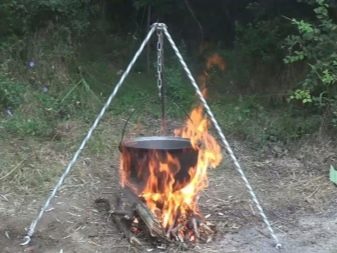

Cast iron for a cauldron can be ordinary or with enamel on the outside. Such dishes are incredibly durable, will last more than a dozen years with proper care, and do not harm your health. A significant disadvantage is the large weight of the cast iron pot.
Another type of "duckling" is dishes made of steel or aluminum. This option is also suitable for induction, it is lighter in weight, it is easy and simple to care for it. These materials do not require pre-heating. But food in such a cauldron can burn badly.
In addition, steel does not withstand high temperatures, rusts and has a short service life.
Thus, a cast iron cauldron is still considered the best option. This material has more advantages over others.

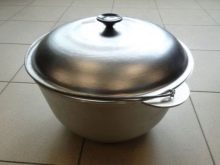
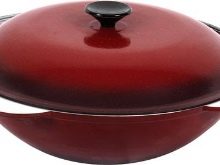
Manufacturers overview
Cauldrons designed for home use are available in many collections of tableware brands. The highest quality options are as follows.
- Kukmara Is a Russian brand that manufactures not only cauldrons, but also pots and pans. Kazans of this brand are considered one of the best. They are made of aluminum alloy and have a thick bottom and sides. The series includes both small cauldrons (3.5 liters) and large (up to 100 liters). The inside of the cauldrons is treated with a special coating that prevents food from burning. However, food can only be mixed with wooden objects, the metal can scratch the coating, and the dishes will become unusable.
- Kazans of the Ukrainian brand "Seaton" made of coated cast iron. Comes with a brush for applying oil (to ignite the dishes before using for the first time). You can choose a small option for 3 liters or a huge one for 12 liters. Food cooked in such dishes does not burn, does not lose its useful properties. It is not recommended to store food leftovers in cast-iron cauldrons so that they do not rust.
- Mayer & Boch. The cauldrons of this brand have a traditional round shape and are made of cast iron. The inside is treated with a non-stick coating. Comes with a glass or cast iron lid. The weight of the small version is up to 8 kg. These utensils can be used on any stovetop.
- The brand of professional cook equipment "Techno-TT" offers induction cauldrons designed for restaurants and cafes. The boiler is built in induction, a lid is included. Volume - from 12 to 50 liters. The cauldron itself is made of cast iron, the plate is made of stainless steel. Such equipment will make it possible to prepare traditional oriental dishes with a unique taste.
- Kazans "Biol" have the shape of a traveling bowler hat and a comfortable handle-arc. For their manufacture, cast iron without a non-stick coating is used. The walls of the cauldron are treated with machine oil, therefore, before the first cooking, it should be calcined for a long time and thoroughly. In such a pot, you can cook both over the fire and on any stove, including induction. Low cost is another nice plus.
The cost of dishes depends on the brand and the material from which they are made.Coated cast iron will cost from 3 to 10 thousand rubles for a "ducks" with a volume of 3-7 liters. Aluminum cauldrons are cheaper, but the quality is lower than that of cast iron.



How to choose?
The classic cauldron has a hemispherical shape - wider on top, gradually tapering to the bottom. The bottom of a good cauldron for home use on the stove is sloping and flat. There are also cauldrons with a hemispherical bottom. They are used for cooking over an open fire using special coasters.
When choosing a cauldron, you should first focus on the material from which it is made, then on the shape and additional qualities. The cauldron must always come with a suitable lid. It should fit snugly to the dishes, not have gaps, so that the food inside the cauldron is cooked evenly, without "drafts".

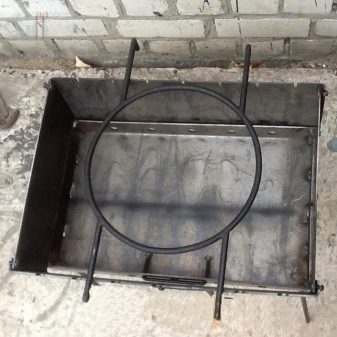
The thick bottom and walls are an important factor. Such dishes will warm up evenly, keep warm longer, and the food will slowly and correctly simmer inside.
Another factor when choosing a pot is its volume. For a small family of 3-4 people, it will be enough to have a cauldron of 3-3.5 liters.
If you plan to cook food in a cauldron for a large company, then it is better to choose a larger option - 8-12 liters.
Having chosen the required model of a cast-iron cauldron, carefully inspect it for chips or rust. They shouldn't be. The inside of the dishes must be absolutely flat, without bald spots. Outside, the cauldron can be covered with enamel or ceramics - this option looks beautiful in any kitchen.

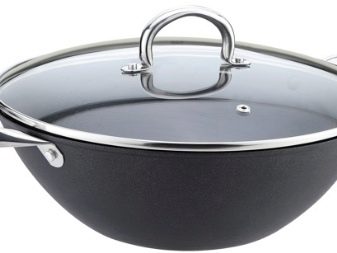
How to care?
Kazan made of real cast iron you need to carefully prepare for the first use:
- first, the dishes must be rinsed well with detergent and a brush, dried with a towel;
- then you should put the cauldron on the stove and ignite for about two hours over medium-high heat, then add a kilogram of salt and ignite for some more time (the salt will turn gray, which means that all the factory oil has come out and the dishes are cleaned);
- after which you need to pour about half a liter of vegetable oil inside and ignite, changing the position of the dishes so that all the walls are in an oil film, this will take about half an hour;
- the oil must be poured out, and the kettle must be thoroughly wiped with a soft cloth and cooled; now the dishes are ready for use.
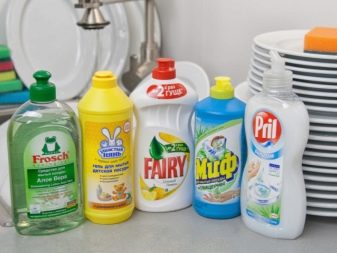

Cleaning the container after cooking is easy - use a regular sponge and dishwashing detergent, or baking soda. Make sure that there is no food and water left in the dishes after washing, otherwise it may cause rust. In addition, it is also undesirable to store ready-made food in a cauldron.
If you notice the appearance of any stains inside the dishes, then you can boil the water with baking soda and scrub thoroughly with a brush.
Then it must be rinsed well with water and dried with a towel. From time to time (once every few years), you can ignite the dishes with oil for prophylaxis.
Correct and careful care of the cauldron will allow you to delight loved ones with unusually tasty dishes for more than a dozen years.
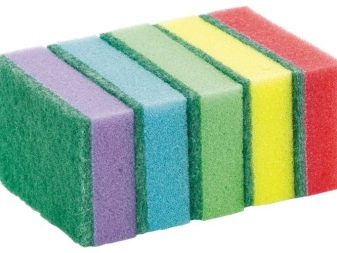
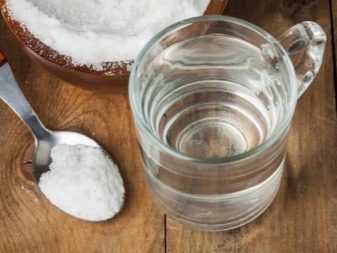
How to test a cauldron for an induction cooker, see below.








